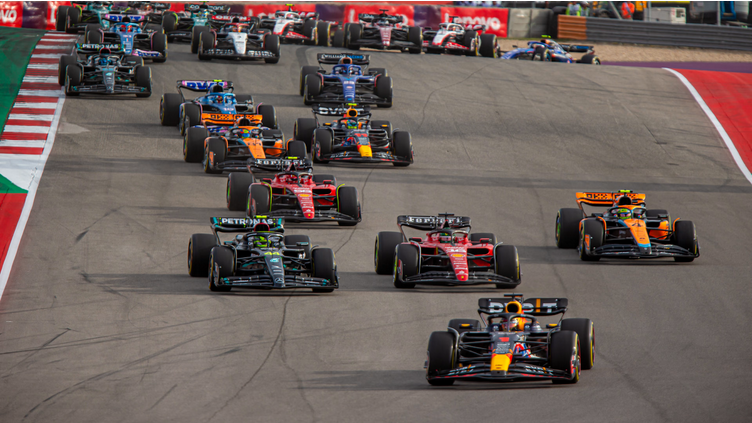Formula 1 qualifying is a pivotal part of any Grand Prix weekend. The positions drivers secure during qualifying determine how the grid will look on race day. This process is broken down into three segments, each focusing on the drivers’ fastest lap times to set the starting positions. Explore the dynamics of each qualifying session and delve into the strategic maneuvers that shape the race grid at https://india.1xbet.com.
- How Does F1 Qualifying Work?
- F1 Qualifying Q1: The First Cut
- F1 Qualifying Q2: The Middle Ground
- F1 Qualifying Q3: The Final Showdown
- Understanding F1 Qualifying Rules
- Tyre Rules in F1 Qualifying
- Testing New Tyre Qualifying Format in 2023
- Potential New Qualifying Format for 2024
- How Many Laps Are Run in a Formula 1 Qualifying Session?
- The Fastest F1 Qualifying Lap Ever
- F1 Sprint Qualifying
How Does F1 Qualifying Work?
The F1 qualifying format has changed over time, with the latest version being introduced in 2016. The format features three distinct qualifying sessions: Q1, Q2, and Q3, all happening on the Saturday of a race weekend. Each session has a fixed duration, and drivers aim to clock the fastest lap possible.
F1 Qualifying Q1: The First Cut
Q1 is an 18-minute session where all drivers hit the track. Their mission? To set a blistering lap time that ensures their place in Q2. At the end of Q1, the slowest drivers are eliminated. Their starting spots for the race are determined based on their best lap times in this session.
F1 Qualifying Q2: The Middle Ground
In Q2, which lasts for 15 minutes, the remaining 15 drivers battle it out. The goal remains the same: set a fast lap to move into Q3. Again, the five slowest drivers are knocked out at the end of Q2, with their starting positions determined by their quickest laps.
F1 Qualifying Q3: The Final Showdown
Q3 is the 12-minute grand finale where the fastest 10 drivers vie for the pole position. The driver who sets the quickest lap time in this session earns the coveted pole position, with the remaining drivers lining up behind them based on their lap times.
Understanding F1 Qualifying Rules
Post-qualifying grid penalties can shake things up. These penalties are handed out for rule infringements, either behavioral or technical. For instance, if the pole sitter incurs a five-place grid penalty, they would start from sixth place, adjusting the grid accordingly. The final grid is confirmed after all penalties are applied.
Tyre Rules in F1 Qualifying
Previously, the top ten qualifiers had to start the race on the tyres they used to set their fastest lap in Q2, while those outside the top ten had free tyre choice. This rule was scrapped in 2022, allowing all teams to choose their starting tyres freely.
Testing New Tyre Qualifying Format in 2023
In 2023, F1 tested a new tyre format, mandating specific tyres for each qualifying session (except in wet conditions): hard tyres in Q1, medium tyres in Q2, and soft tyres in Q3. This aimed to conserve tyres and was trialed during the Hungarian and Italian Grands Prix.
<iframe width=”560″ height=”315″ F1 Tyres – How They Work & the Rules Around Them title=”YouTube video player” frameborder=”0″ allow=”accelerometer; autoplay; clipboard-write; encrypted-media; gyroscope; picture-in-picture; web-share” referrerpolicy=”strict-origin-when-cross-origin” allowfullscreen></iframe>
Potential New Qualifying Format for 2024
The tyre format test in 2023 was well-received, and there’s enthusiasm for implementing it throughout the 2024 season. However, the ultimate decision has yet to be made.
How Many Laps Are Run in a Formula 1 Qualifying Session?
Drivers decide how many laps to run during qualifying, balancing the need for speed with tyre conservation. On average, drivers aim for about two fast laps per qualifying session (Q1, Q2, and Q3).
The Fastest F1 Qualifying Lap Ever
In 2020, Lewis Hamilton set a new benchmark at Monza with a lap time of 1:18.887, averaging a speed of 264.362 kilometers per hour. This shattered the previous record held by Juan Pablo Montoya, who set a 1:19.525 lap in 2004, also at Monza, driving for Williams-BMW.
F1 Sprint Qualifying
After successful trials in 2021 and 2022, more Sprint weekends were added in 2022. During these weekends, traditional qualifying takes place on Friday evening, and a short Sprint race on Saturday sets the grid for Sunday’s Grand Prix. The fastest driver in traditional qualifying is recognized as the pole-sitter, and the top eight finishers in the Sprint earn points, adding an extra layer of strategy and excitement to the weekend.

I am a passionate technology and business enthusiast, constantly exploring the intersection where innovation meets entrepreneurship. With a keen eye for emerging trends and a deep understanding of market dynamics, I provide insightful analysis and commentary on the latest advancements shaping the tech industry.
